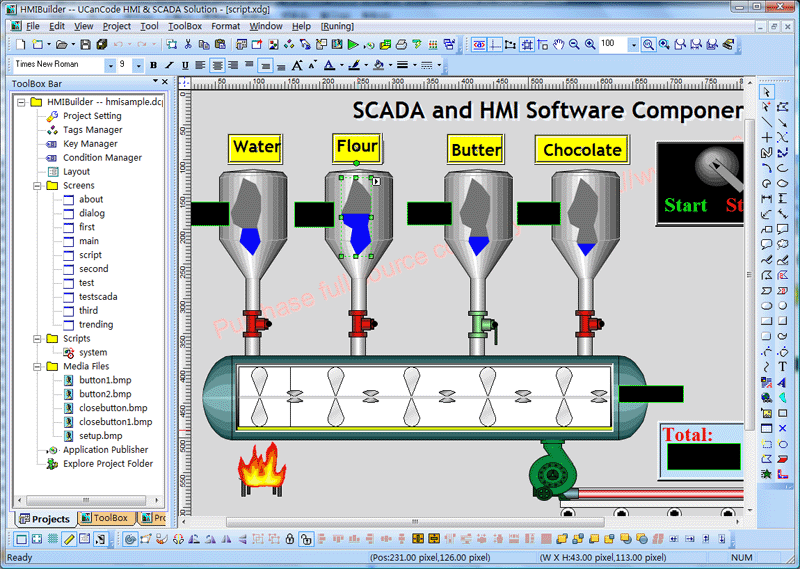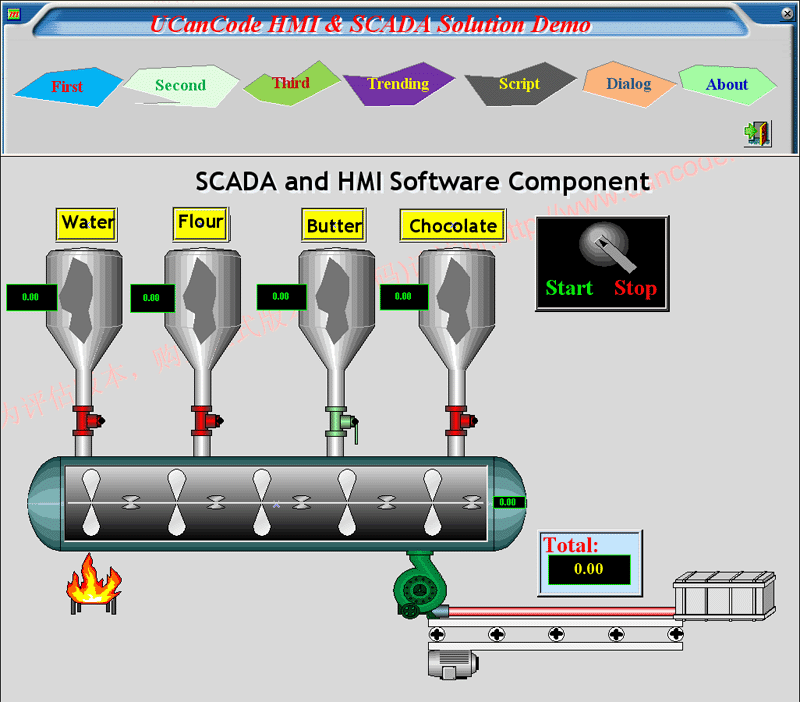|
Intouch - like HMI Software, SCADA System, OPC, PLC VC++ Source
Code 2025 |
 Product
Tour Product
Tour
E-XD++ Workflow Component product walkthrough
 Screenshots Screenshots
Applications built on E-XD++ Workflow Component
 Product
feature comparison Product
feature comparison
Powerful, flexible, and easy to
use Diagram Components.
Powerful and flexible enough to create diagrams exactly the way you want
them to appear. So easy to use that you will be able to prototype your
application in just a few minutes.
Feature rich.
With features such as automatic layout, multiple layers, collapsible
sub-graphs, snap-to connection points, XML, SVG, and more, E-XD++ Have the
power and flexibility you need to create sophisticated diagrams, quickly and
easily. Events such as click, double-click, hover, select, rubber-band
select, copy, delete, resize and move are supported. Operations such as
drag-and-drop, unlimited undo/redo, and clipboard operations are common and
complex, and are expected by today's sophisticated users. it full supports
importing ArcGis, SVG and DXF File format.
Performance and Scalability.
UCanCode E-XD++ Capable of handling many thousands of nodes and edges, up to
hundreds of thousands depending upon the complexity of the nodes you wish to
draw and the operations you wish to allow. Our graphical classes are
extremely lightweight objects enabling outstanding performance.
Save Time and Money and gain Reliability.
A diagram is worth 1,000 words, and E-XD++ is shipped with more than 500,000 lines of well designed and well tested code! It is used by hundreds of the world's most quality conscious companies. It will saves you thousands of hours of complex coding and years of maintenance. |
The HMIBuilder (Part of UCanCode HMI
Solution) may be incorporated into an application to provide the end-user
with the ability to create and edit HMI
displays.
HMIBuilder Example:

Operation Interface <HMIPalyer>:

The leader
in visualization component -- FULL
VC++ Source Code Shipped!
XD++ Diagrammer Suite is the the world’s
leading VC++ and .NET visualization component. Renowned for incredibly rich
graphics, XD++ helps thousands developers build applications that offer
unparalleled functionality. Outstanding productivity lowers project risk and
reduces maintenance headaches. With 20 years of dedicated research and
development, UCanCode leads the market for visualization technologies,
providing outstanding customer support.
 Download
this solution Demo Link 1 Download
this solution Demo Link 1
 Download
this solution Demo Link 2 Download
this solution Demo Link 2

Buy all the source code:
Official
Version of the E-XD++ component library visual graphics solutions for
enterprise versions of all of this Source Code,
Click the button below to order from UCanCode:

News:
1 UCanCode Advance E-XD++
CAD Drawing and Printing Solution
Source Code Solution for C/C++, .NET V2025 is released!
2
UCanCode Advance E-XD++
HMI & SCADA Source Code Solution for C/C++, .NET V2025 is released!
3
UCanCode
Advance E-XD++ GIS SVG Drawing and Printing Solution
Source Code Solution for C/C++, .NET V2025 is released!
Contact UCanCode Software
To buy the source code or learn more about with:
|
|





